
SECOND QUARTER, MAY 2009 VOLUME 23, NUMBER 4

By Dave McCracken General Manager
Note: This was originally intended to be the April 2009 newsletter. But I have been pretty certain that we were finally going to close a deal on the purchase of a hot new mining claim. So I have been holding off for the past few weeks, hoping to bring you this great news in time for the start of the season. And here we are in May! Because this is going out so late, I am calling it the “May Newsletter.”
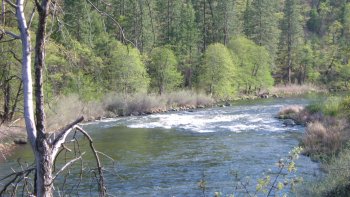
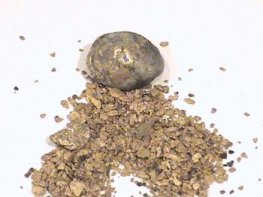
Many of you will remember a few years ago when we decided to let go of several mining properties along the lower main stem of the Salmon River, that I said we had our eyes on some very special areas which we wanted to purchase along the Klamath River. I am very happy to announce that we have just purchased one of those properties. This property is located in the heart of the Gottville Mining District, which historically was one of the richest areas for placer mining along the Klamath River. This new mining property will soon be found on our maps and claims guide as the K-2A, Gottville Mining Claim.
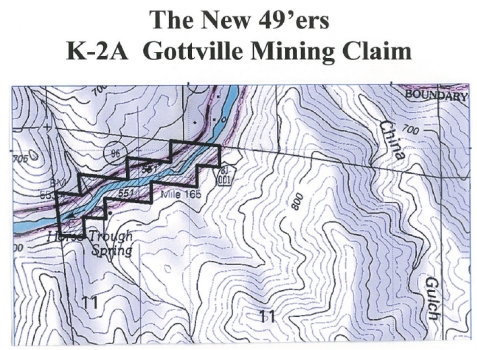
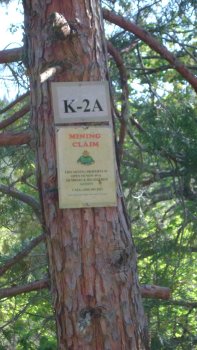
Location: This property is located around 4 miles upstream from the community of Klamath River. The upper boundary sign is posted on a tree near mile marker 92:33. The lower boundary sign is posted on a tree near mile marker 91:83. You can get onto this claim using Google Earth by using the following coordinates: 41 51’31.3″N 122 45’1.5″W
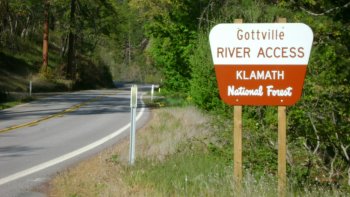
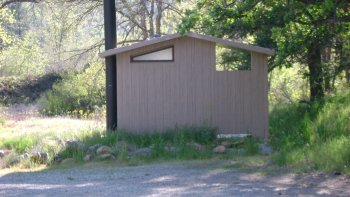
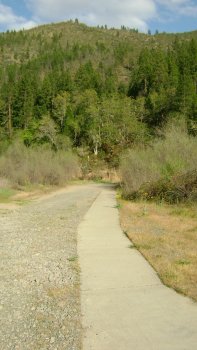
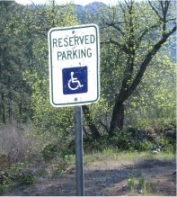
Access: There is a really nice developed USFS river access which can be found at mile marker 92:14. A high-quality, permanent toilet facility exists there, along with a special disabled parking location. There is even a special sidewalk to allow disabled persons more-easy access to the river. As other river users make use of this developed access, we will please need to be very mindful to not block the access with our own activity. By this, I mean we will not be doing any camping down on the river access, and any parking must be accomplished in such a way as to not block access to others who will want to get in there with boat trailers and turn around.
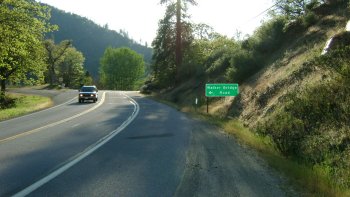
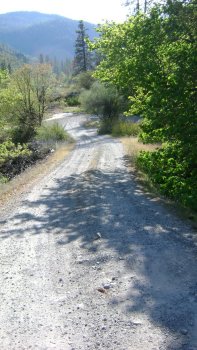
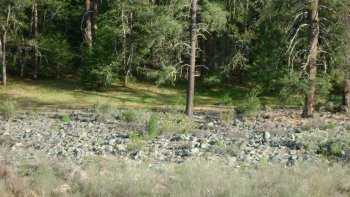
There is also some pretty good access on the far side of the river. The best way to get over there is to drive down river on Highway-96 to the Walker Road Bridge (at mile marker 84:04), turn left, and drive about 7 miles upriver on a pretty good road which exists on the far side of the river. We have our claim boundaries posted over there, as well.
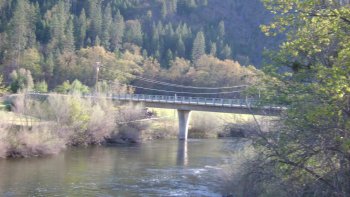
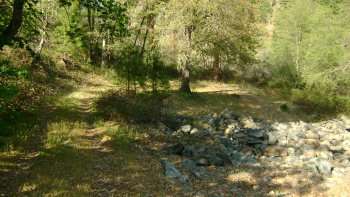
Camping on upper-end of claim
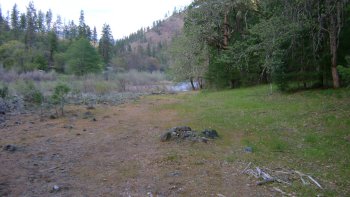
Camping: There is a limited-sized camping area on the Highway-96 side of the river towards the top-end of the claim. There is a larger camping area at the river access area on the other side of the river. It would be smart to look at either one of these before deciding to drive RV’s down into them (to make sure you can get back out of there!). By the way, there is developed fresh water on the claim flowing from spring on the far side of the river.
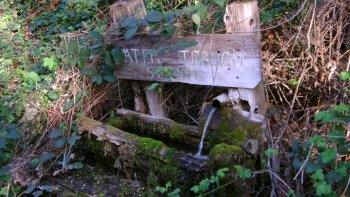 As is true on any of our properties, you are only allowed to camp there if you bring along some sort of self-containment system (and use it) to take care of your personal business. We have very low-cost systems available in the store that will meet even the lowest budgets. Please be mindful that our internal affairs people will be looking in on all campers to make sure you have a self-contained system (portable toilet) present. No exceptions!
As is true on any of our properties, you are only allowed to camp there if you bring along some sort of self-containment system (and use it) to take care of your personal business. We have very low-cost systems available in the store that will meet even the lowest budgets. Please be mindful that our internal affairs people will be looking in on all campers to make sure you have a self-contained system (portable toilet) present. No exceptions!
In my own view, for members who intend to work on this new claim, the best camping available is located on K-2 at Skeahan Bar, which is located just three miles upriver. Skeahan Bar provides an extensive camping area. It is also a really good place to mine!
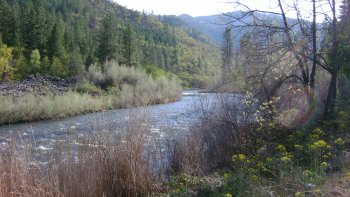 Prospects: This section of river has perhaps the most proven rich mining history of all our mining properties. As I have repeated over and over in my books, the best way I personally know of to establish rich gold deposits today is to go to the exact areas where the old-timers found them. To see where the old-timers struck it rich, just look for where they left the large rock piles behind. You will find more huge old rock piles in the Gottville Mining District, than anywhere else along the Klamath River. There are a bunch of them on this new claim!
Prospects: This section of river has perhaps the most proven rich mining history of all our mining properties. As I have repeated over and over in my books, the best way I personally know of to establish rich gold deposits today is to go to the exact areas where the old-timers found them. To see where the old-timers struck it rich, just look for where they left the large rock piles behind. You will find more huge old rock piles in the Gottville Mining District, than anywhere else along the Klamath River. There are a bunch of them on this new claim!
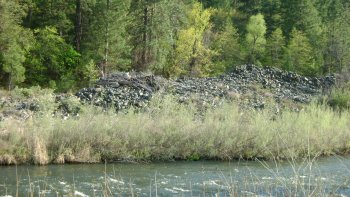 When looking at these single, stand-alone rock piles, it is important to understand what they are. Most of them were not formed off the backside of some massive gold recovery systems. In other words, they are not actually “tailings.” The huge single piles, as we see them on this new claim, were mostly associated with large, mechanized derricks. These were used to drag buckets of material and boulders out of large hand-excavations that were being dug out in the river – or sometimes in the bars alongside the river.
When looking at these single, stand-alone rock piles, it is important to understand what they are. Most of them were not formed off the backside of some massive gold recovery systems. In other words, they are not actually “tailings.” The huge single piles, as we see them on this new claim, were mostly associated with large, mechanized derricks. These were used to drag buckets of material and boulders out of large hand-excavations that were being dug out in the river – or sometimes in the bars alongside the river.
The old-timers would construct diversions (called “wing dams”) out in the active river to direct the water’s flow around where they wanted to dig. Then they would roll and shovel river-material into a large bucket or sling down in their excavations and use the derrick (often powered by a steam winch) to drag the material out of their way and into huge piles alongside their active excavations. They did this to get themselves down to the deeper pay-layers, just like we do these days. In other words, the material you see in these piles consists of the overburden and big rocks that the old-timers dragged out of their holes so that they could gain access to the richer pay-layers that were present deeper in the streambed.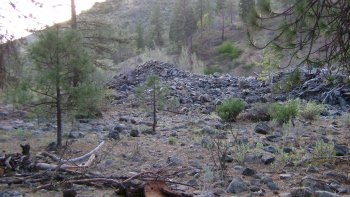
Most often, the material you see in these big piles on the banks was never processed for gold-content. This explains why some of our members are already starting to recover gold out of the huge piles on the new claim (we posted the signs a few days ago, and members are already getting started). It also explains why some of our members have been doing so well processing the huge piles along other sections of the Klamath River.
Here are a few important things to understand about the huge piles:
2) When you see more than a single huge rock pile in proximity, you know that the labor was paying off. Miners do not make repeated blunders in proximity. This new claim has lots of huge piles. The whole Gottville mining district has them!
3) Since the rock piles did not wash away in the major flood events which occurred since they were made, we can look at the piles to get a good idea where the old-timers mined the claim. Looking at the piles, it looks to me like most of the claim has yet to be mined. There will be serious, original (virgin) gold deposits present there. This is the reason we have been quietly, patiently waiting for our opportunity to buy the claim.
4) We must keep in mind that there was zero flood control (dams) on the Klamath River at the time when these rock piles were created. This means that all of the work to create the diversions (wing dams) and dig the excavations had to occur likely between the months of July through October. The first big rain in the fall would have put an end to the entire investment for that particular season. Following winter storm events will have completely buried the excavations. This means there was a short life span on each excavation where you see the rock piles.
5) It is likely, in many cases, that more time and effort was invested into getting an excavation down to the pay-dirt, than the time and effort invested into working the rich material.
6) No question, whatever was remaining of exposed pay-dirt had to be abandoned once the first flood event of the rainy season arrived. While it is likely that some mining companies returned to the same places during the following year, I’m sure that many did not. The fact that you don’t see continuous piles up along the whole claim is evidence that much of the claim remains un-mined. It is a good thing the old-timers did not have access to modern suction dredges or the whole claim would have been mined out!
7) Since a mechanized derrick could drag material from a long distance away, the height of the pile is not a read on how deep the streambed material is in the river. But you can look at the size of the piles to get a reasonable idea how big the excavation was in the river or on the bar.
8) To some degree, you can expect that a lot of the material you will find at the top of these rock piles will be from the places closest to the pay-layers which the old-timers were working. Add 60+ years of natural weathering (heavy rains), and you can find some nice gold concentrations in some of these piles. Otto Gaither showed me quite a stash of gold that he and some of his friends were mining out of one of their secret rock piles on the river several years ago. The gold was so good that I actually went to look at the pile. They were getting their gold right out of the top!
9) A wing dam was usually constructed on top of original (virgin) streambed and positioned to keep the water flowing on one side so they could excavate the material on the other side. I’ve seen or heard of it many times that all you have to do is mine under, and to the other side, of a wing dam to get at the very material which the old-timers were mining. My personal best day on the Klamath River (24 ounces of beautiful nuggets) was where Eric Bosch and I went just to the other side of a wing dam out in the river. We would have found a lot more gold that day, but we were too excited to work! That’s a true story! The wing dam was placed right adjacent to a huge rock pile like the ones on this new claim; a rock pile which was producing really well for several guys using high-bankers to recover gold out of the pilesâ¦
10) By now, everybody ought to know what hard-packed streambed is. This is compacted gravel and rocks which were laid down in layers during major flood events. Nearly all the high-grade gold we are going to find in the river or on the bars is going to be associated with hard-pack. I cannot overstress the importance that you need to know what hard-pack is. If you don’t, I strongly urge you to read my books and/or attend our scheduled weekend mining projects. There is a learning curve to prospecting for high-grade gold. The sooner you get through it, the sooner you will be pleased with your results. We are here to help. But it is up to you to make use of the services which we provide to help all members.
The days of just going out and claiming rich mining properties along the Klamath River are long gone. These days, you have to pay big money for the best claims. As New 49’er members, we are all pooling our resources so that we have the resources to acquire the best properties when they become available.
Fortunately, in this case, the previous owner consented to allow a small team of New 49’er members to do a few days of dredge-testing before we finalized the deal. Each of these members participated in my week-long dredging projects, and I have strong confidence in their abilities and work ethic. They just happened to be available when the sampling opportunity presented itself. Hold onto your hats; here follows their sampling report:
You will be happy to know that we also have our eye on several other, similar very rich sections of the river. Please be patient with us. Real treasures like this take time to acquire!

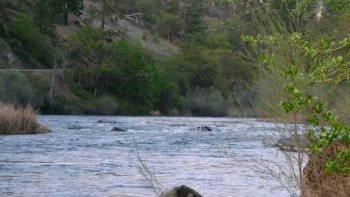
If you look at the images here, you will see that there is some fantastic river-diversity on this claim – nice river bends, and at least four natural riffles (rapids) which will have contributed nicely to forming well-developed gold paths and pay-streaks in the river and on the banks. While we already have reports of nice gold coming out of the piles, I am not aware that any sampling has been done yet on the banks. My guess is that there will be good potential there, too.
I consider this could potentially be the richest claim we have ever had. Only a bit of time is going to prove this out. Based upon the sampling report authored by Sean, I predict there is going to be some, for lack of an easier term, “recreational” excellent dredging opportunity within a re-deposited pay-layer that is close to the surface of the river-bottom. By “recreational,” I mean perhaps the pay-dirt can be reached with smaller-sized dredges or members who are not able to invest substantial time and/or physical effort (we all have our personal limitations).
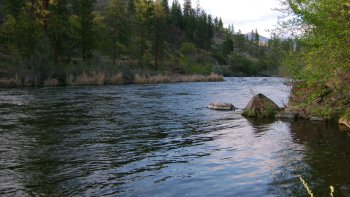 While it might take some time to develop the potential, I believe there is going to be some very serious, commercial dredging opportunity for those members who possess the experience and resources to access the remaining original streambed at the bottom of the river. There will be some rich gold deposits on this claim! As much as I would like to be amongst the first to tap those deposits, I’ll wait patiently for the first and second waves of other members. You guys and gals can make your go at it, first. I’ll get my chance laterâ¦
While it might take some time to develop the potential, I believe there is going to be some very serious, commercial dredging opportunity for those members who possess the experience and resources to access the remaining original streambed at the bottom of the river. There will be some rich gold deposits on this claim! As much as I would like to be amongst the first to tap those deposits, I’ll wait patiently for the first and second waves of other members. You guys and gals can make your go at it, first. I’ll get my chance laterâ¦
Who gets to go first? Our agreement with the authorities is to limit the number of suction dredges on our properties to no more than 10 dredges per mile on the Klamath River. This includes dredges in the river that are just sitting idle. Under normal circumstances, it is not difficult to maintain this level of activity. But when opening up a hot new claim like this, I suspect there will likely be more than ten members who would like to dredge in there at the beginning of the season.
I have to start by telling you that I committed first option to the three members (Sean #905, Wendell #1514 & Steve #1250) who sampled the claim before we made the purchase, and pledged to be straight with me about how well they did on the claim. The reason this was so important to me is that several years ago, I trusted a very experienced member (I won’t name the guilty party) to sample another of the
(very) rich properties we wanted to buy (which was available at a very reasonable price). That property turned out to be so rich that the guy betrayed me and the Club, and went ahead and negotiated his own purchase with the owner!
It will take me a long time to get over that one!
In this case, I committed to Sean, Wendell and Steve that they would have first option to put their dredges on the new claim (60 feet each on one side or the other of the river) as long as they arrive with their dredges on opening day, which is 23 May this season in that part of the Klamath River. They will have first choice of where to go.
Because of the amount of money involved, we would not likely have bought these claims without the positive test results from these three very loyal members. We are also very lucky these guys kept quiet about the test results (very hard to do when you find so much gold); or it is likely the price of the claim would have gone beyond our means. Jason Inks could bring in a fortune for this claim on his on-line auction! We are very lucky to have it!
I have given this considerable thought; and since there is not enough time remaining to have a debate, I have decided that we need to do a lottery to choose the first 10 members who will be allowed to place dredges on this new claim. It will actually be an additional 7 dredges as long as Sean, Wendell and Steve move their dredges onto the claim on opening day.
Any other members who wish to place a dredge on the new claim on opening day must make contact with Montine or Myrna in our office (530 493-2012) and have them place your names on the lottery-list. Membership accounts must be up-to-date for you to qualify for this lottery. To avoid causing confusion, please don’t enter in this lottery unless you fully intend to place your dredge in the water on opening day.
So that people can plan in advance, Montine will arrange the initial lottery drawing to take place on Saturday, 16 May. That is one week before opening day. She will then contact the lottery winners so they/you can make plans. If any of the 10 original dredgers are not present to put their dredges in the water on opening day, they will be disqualified (no exceptions); and our staff will immediately draw others who will be allowed to place their dredge(s) in the water on the following day, 24 May.
Original lottery winners should let us know as soon as possible if your plans change, so we can draw someone else in time for opening day.
This means you will have to be present to get in on the first wave. For management purposes, we just want to get the first 10 dredges in there as quickly as practical, using the fairest process possible. I’m sorry if this system does not work for everyone. We have to come up with something, so this is the way we are going to do it!
The lottery will be closed as soon as there are 10 dredges on the claim using this process. Afterwards, it will be first come, first served when one of the original ten dredges is pulled off the river. Our internal affairs staff will work out any disputes the best they can. I ask that everyone please cooperate with them.
Important: It is the responsibility of all members to do a dredge-count before placing your own dredge anywhere on our mining properties. We cannot have more than 10 dredges per mile on the Klamath, no more than 8 dredges per mile along the Scott and Salmon Rivers, and no more than 3 dredges per mile on the creek properties. If you place an 11th dredge in the river on this new claim, you are just going to cause all of us and yourself a lot of trouble. Please cooperate!
On that note, we have 60+ miles of good properties, most which have yet to even be sampled! I will start my own (part time) dredging season down on K-17 and expect to do quite well. There are plenty of places to go! Wait it out. Long experience in this Club has shown that the first wave of dredgers on a new claim usually don’t do very well, and usually are long-gone before the first important discovery is made. It is the second and third waves which usually develop the hot new claims. I can wait. So can you. It is going to take many years to develop another half-mile of the Klamath River!
There are no limits placed on the numbers of high-bankers, gold panners, vack-miners or electronic prospectors. You guys and gals can get started right away if you like. We just need to keep things spread out. For members using pumped water to process material on the bank, I ask that you please carefully review the Club Rules about not allowing dirty water to flow back into the river, and about back-filling any holes which are dug up out of the water. I don’t believe there is any need to backfill work done on the huge piles; because in that case, we are actually helping to level-off piles made by an earlier generation of miners.
No motorized mining should take place within 100 feet of any river access ramp. Please, no digging of any kind around this river access, since it is popular with other types of river users, and was especially created for disabled access.
Since some people either do not read this stuff, or refuse to cooperate, we will rely upon all of you other members to do your part to help us prevent:
B) Camping at the river access, or any parking that interferes with free use of the access by others.
C) Any type of digging or dredging anywhere near the river access.
Since our Internal Affairs guys cannot be everywhere at once, I am thanking you guys in advance for helping us from allowing things to get out of hand!
Legal/Political Updates
California Senate Bill 670: Our lobbyists in Sacramento have been working on our behalf to overcome California Senate Bill 670 which was introduced by Senator Wiggins on February 27. This bill is another gift to us by the Karuk Tribe and its allies. If passed into law, the bill would prohibit the State of California from issuing any further suction dredging permits until the Department of Fish & Game (DFG) has adopted new regulations pursuant to a full update of the Environmental Impact Report (EIR) that was completed in 1994.
The earlier EIR is what has supported our existing regulations for the past 14 years. This was completed after a very long and contentious process in which every potential impact upon fish from suction dredging was carefully considered. While they have refused to present any evidence showing that suction dredging under our existing regulations has ever harmed a single fish in California, the Karuks have been challenging the earlier EIR because it has not been updated since 1994.
During earlier litigation which we Intervened in, the Alameda Superior Court in California Ruled against the Karuk Tribe and DFG, deciding that DFG could not change our suction dredge regulations without first reviewing the existing EIR through the proper administrative process (which requires the least-restrictive regulations to be imposed upon private industry to resolve problems which must be demonstrated by best available science).
Ultimately, the Court Ordered DFG to conduct a proper review of our EIR. But the review process has basically been stalled because California is having serious financial difficulties (which are likely to continue).
If the Karuks have their way, this legislation will prevent further suction dredging in California until the full environmental review is completed. Then they will continue to do everything within their power, as they have already been doing, to make sure the review process is never completed! You guys see how this works?
Our lobbyists are right on top of this as the legislative process is underway in Sacramento. I will keep you informed how you can help as the process moves forward.
New anti-dredging litigation in Alameda Court: Meanwhile, we are continuing to defend against the most recent lawsuit which the Karuks and their allies have filed against the State of California to stop all suction dredging in California until the EIR process has been completed. We are basically defending against the very same Karuk attacks both in the California legislature (with our lobbyists) and in the California Court system (with our attorneys).
In the litigation, we have begun with a Petition to the Court to allow The New 49’ers to Intervene in the Litigation. Our team of attorneys has been right on top of this.
Petition to challenge the special fishing privileges being allowed to the Karuk Tribe by DFG: In light of the unending attacks against us and the other productive enterprises within Siskiyou County, I authorized our attorneys to draft a Petition to challenge any “right” which the Karuk Tribe possesses to kill fish along the Klamath River. This Petition was filed with the California Department of Fish & Game (DFG) on 2 March, 2009.
Our Petition basically challenged California DFG on two arguments: First, that since the Karuks have no recognized federal fishing right in the first place, the State Constitution prevents DFG from extending any “special” right upon the Karuks that all other citizens may not also enjoy.
Our second argument basically mirrored many of the arguments which the Karuks have used against us and other productive enterprises. The Karuks are actually out there deliberately killing fish without any environmental oversight whatsoever! How can the State of California continue to use its environmental laws to regulate all productive activity out of business (activities which they cannot prove that are even harming fish), while they completely turn their backs upon the activities of the Karuk Tribe that is out there killing as many fish as they can pack off the river?
Unfortunately, several weeks ago, the California Fish & Game Commission voted to deny our Petition. Our attorneys believe that the justifications used to support their denial provide us with a good opportunity to sue the State of California. But, in light of the other challenges we are facing at the moment (all which are costing plenty of money), we have placed that on the backburner for the time being.
New developments: It turns out that there are a growing number of active Karuk members coming to the surface who are voicing increasing discontent with existing Tribal leadership. My understanding is that they will file the first motions to intervene in the ongoing litigation as early as this week. These are Karuk members who do not want to lose their own mining rights; who believe suction dredging is good for fish (they know from direct experience), who are strongly objecting to the substantial corruption within existing Karuk Tribal management; and who are saying that they more accurately represent the interests of the general membership of the Tribe. I understand they have already succeeded in having Leaf Hillman suspended from the Tribal leadership (turns out Leaf was arrested in January for possession of methamphetamines), and they are actively working on other corrupt leaders. I am being told that if this group of concerned Karuks cannot expunge the existing leadership, they are planning to split the Tribe in two separate units.
In the middle of all this, the Tribe is on schedule to bring a motion before the Court to stop California Fish & Game from spending any more taxpayer money on the suction dredge program until the updated EIR is completed. If all remains on schedule, the Court will decide what to do about this motion during the second week of June.
While our attorneys are on top of this, it is impossible to predict what a judge is going to do. With this is mind, once again, I suggest if you have not yet applied for your 2009 suction dredge permit in California, and you intend to dredge this year, that you get your permit before the end of May!
Please Continue to Support our Legal Fund!
I want to thank all of you who have responded to our calls for financial assistance to pay the specialists we have hired to defend our industry. Your help has pretty-much allowed us to stay even with the increased costs associated with all this additional legal and political activity.
Because our need to raise funds is immediate, once again, we have our ever-vigilant member, Jim Yerby, to thank for organizing yet another set of very valuable prizes for a prize drawing – which is already in progress. In addition to 53 very nice prizes which have been donated by others, we also are expressing big thank you to Jeff Kuykendal at Proline for donating a brand new 3-inch Proline dredge (worth $2,500.00) as our main prize, and to Louie Welding for donating a 2 ½-inch dredge/high-banker combo!
If anyone would like to contribute a prize towards our legal and political fundraising, please contact Jim at grizzwag@charter.net. What do you have that might be a good prize in our fund-raising?
Here is a link to the prizes included in this latest fundraiser.
The contributors of these prizes have authorized the girls in our office to print a ticket on your behalf for each $10 contribution that we receive from you ($100 contribution will generate10 tickets, etc.). This prize drawing will take place on 4 July, 2009. There is no limit to the number of tickets you can accumulate, or the number of prizes that you can win in this drawing.
Paypal has informed us that we are not allowed to transfer money over their system if the money is associated with any type of gambling activity (like a prize drawing), so we are no longer promoting the use of our Paypal link for financial contributions associated with the prize drawing. This unfortunate development has sharply reduced contributions over the past several weeks. So I am asking that you guys please try and help us make up the difference by calling in to the office at 530 493-2012, or mailing in something to The New 49’er legal fund, 27 Davis Road, Happy Camp, CA 96039.
We need your help on this more than ever!
Thanks very much for whatever you can do to help with the immediate matters at hand!
Other Announcements
Please register your presence or your guests on our properties! If it is inconvenient for you to come to Happy Camp, you can call Montine or Myrna at the office (530 493-2012) and have them make an entry in the log book on your behalf. If you are bringing guests, please call them far enough in advance that they can mail, fax or email a guest pass in advance. We appreciate your cooperation on this!
The USFS finally repaired the bridge which leads to our West Branch claims (I-3) on Indian Creek. To avoid confusion this year, we have asked the USFS to open both gates on the roads which lead to our West Branch claims on 1 July, which is the opening day of dredging season there.
2009 Group Prospecting Programs
All weekend events are free to Full & Associate Members. Here follows the Schedule of Events for our upcoming 2009 season: June 6 & 7; June 27 & 28; July 18 & 19; August 8 & 9; August 29 & 30.





